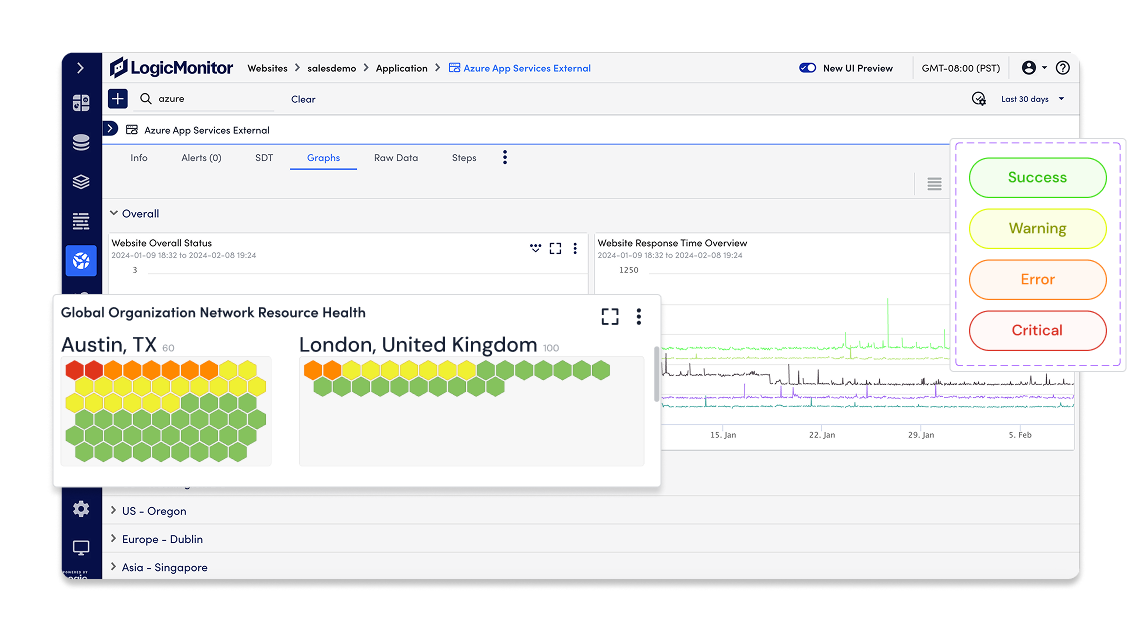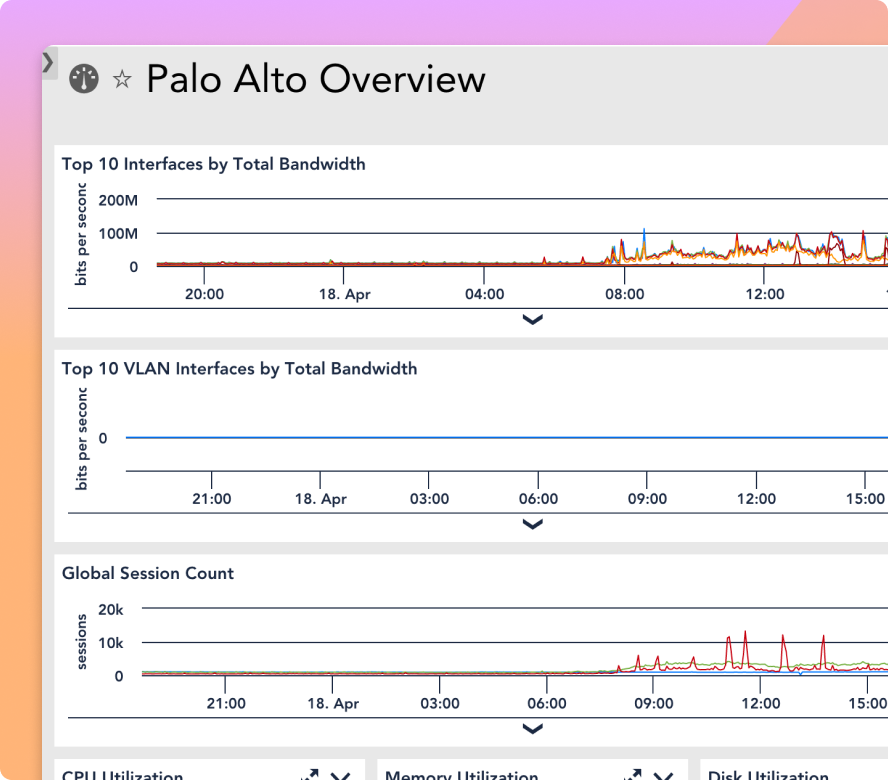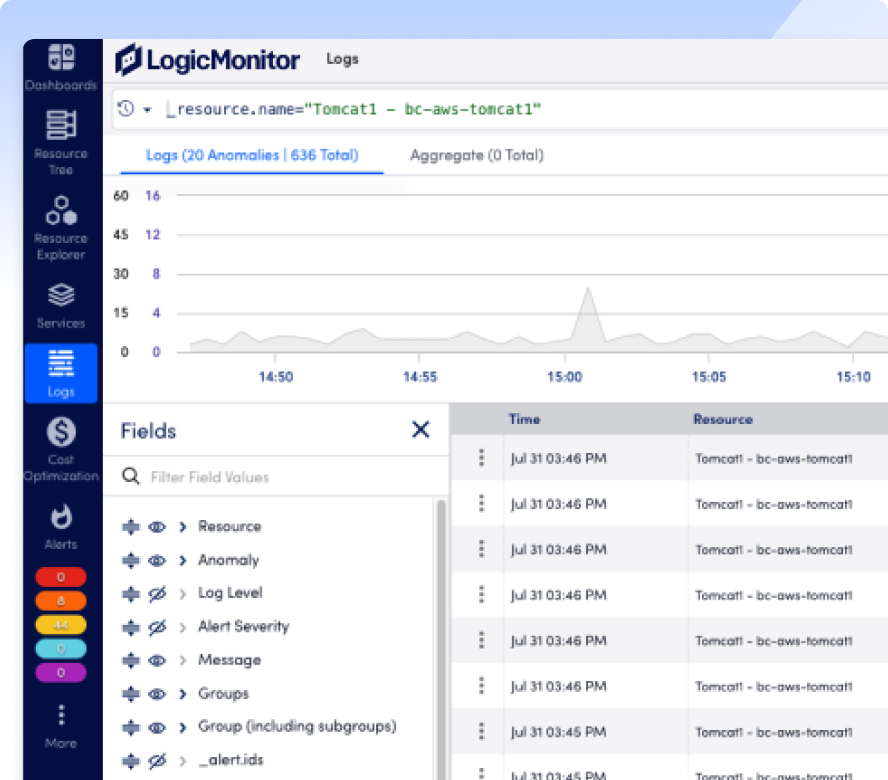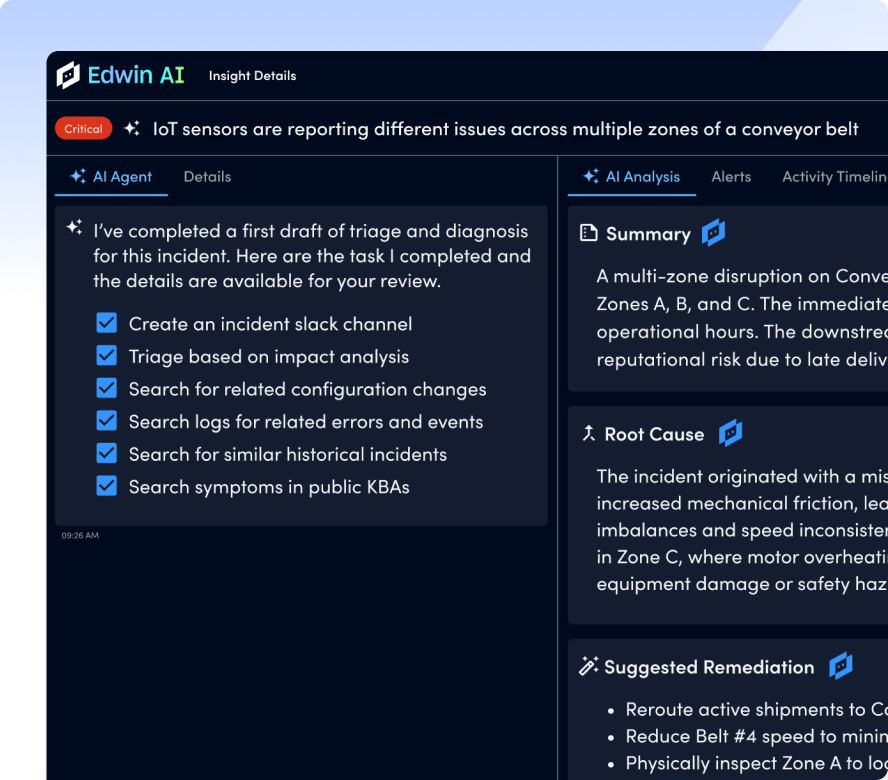Website Monitoring That Protects Performance and Customer Experience
Deliver reliable digital experiences with unified availability monitoring, contextual insights, and proactive resolution powered by a single platform.

Deliver reliable digital experiences with unified availability monitoring, contextual insights, and proactive resolution powered by a single platform.

Find and fix web issues before users run into errors—so you can avoid disruption and keep digital experiences running smoothly.
See uptime, speed, and responsiveness from global locations so you can detect slowdowns and deliver fast experiences.
Connect front-end symptoms to back-end root causes, so teams can act quickly and avoid digging through disconnected tools.
Cut through noise and get alerted only when something truly needs attention, so your team can act rather than waste time chasing false positives.
Spot where users drop off, run into friction, or hit errors, then make the changes that improve satisfaction and keep them coming back.
Instantly prove compliance with clear reports that build trust and free your team from manual tracking.
With LM Uptime, as part of LM Envision, you can detect disruptions early, reduce false alerts, and resolve incidents faster through full observability across every digital touchpoint.
Monitor website and endpoint availability with continuous web and ping checks. Track response times in real time and detect slowdowns before they impact user experience.

Understand how your websites and endpoints are performing in real time, from uptime status to response trends, so you can detect disruptions early and keep users satisfied.

Get notified instantly when your site is down, with the context to take appropriate action.

Monitor uptime from worldwide locations to catch regional or ISP-level disruptions.

Keep your teams aligned and your execs informed with unified reporting and customizable dashboards.

INTEGRATIONS
LM Envision connects with the tools your team relies on, from cloud providers and CI/CD pipelines to collaboration, alerting, and ITSM platforms. Extend website monitoring into your existing workflows and reduce the noise of jumping between point solutions.
100%
collector-based and API-friendly
3,000+
integrations and counting
AI AGENT FOR Cloud-Native Ops
Troubleshooting website issues doesn’t have to mean hunting through logs or pivoting between dashboards. Ask Edwin about any anomaly and get instant, human-readable answers that help you fix issues faster.
67%
ITSM incident reduction
88%
noise reduction

BY THE NUMBERS
GET ANSWERS
Get the answers to your top website monitoring questions.
LogicMonitor’s uptime monitoring (known as LM Uptime) is built into our LM Envision observability platform and correlates front-end failures with backend metrics, so teams see what’s down and why without context-switching between tools.
Learn moreLM Uptime verifies real availability across distributed systems with external checks from multiple locations, enabling prompt outage detection and faster diagnosis and repair.
LM Uptime correlates failed web checks with infrastructure and application metrics/logs inside LM Envision, so you can see the likely causes in one place.
LM Uptime runs HTTP/Ping checks from multiple global locations with location-aware alerting to show whether an incident is regional or widespread. Checks are sampled at 1-minute intervals and retained with history for post-incident analysis.
